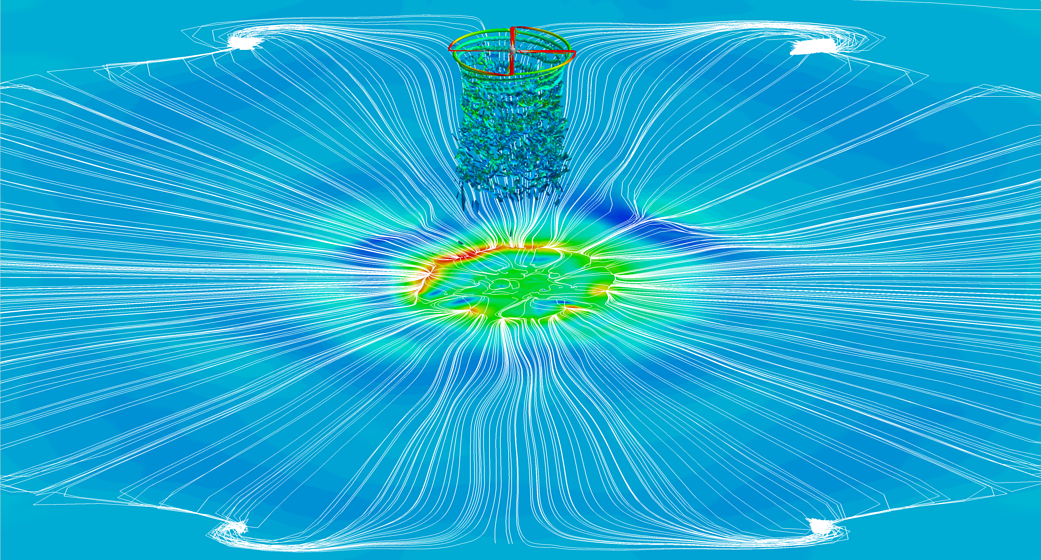To help develop more efficient rotorcraft designs, engineers need to better understand the complex airflow interactions caused by the spinning rotor. One of the goals of NASA’s Rotary Wing Project is to develop accurate multidisciplinary design analysis and optimization tools for new civil rotorcraft concepts using high-fidelity computational fluid dynamics (CFD) codes. CFD simulations of experimental rotor hover tests help researchers improve and validate the accuracy of the computational models and help engineers design better wind tunnel experiments.
This visualization shows a pre-test hover simulation of a rotor within the 80×120-foot test section of the National Full-Scale Aerodynamics Complex at NASA’s Ames Research Center in Moffett Field, California. The vortex wake is colored by vorticity, the wind tunnel floor is colored by pressure (with red as high and blue as low), and flow streamlines on the floor are shown in white. The simulation was run on the Pleiades supercomputer at the NASA Advanced Supercomputing facility at Ames.
Related: NASA is showcasing more than 35 of the agency’s exciting computational achievements at SC14, the international supercomputing conference, Nov. 16-21, 2014 in New Orleans.





























